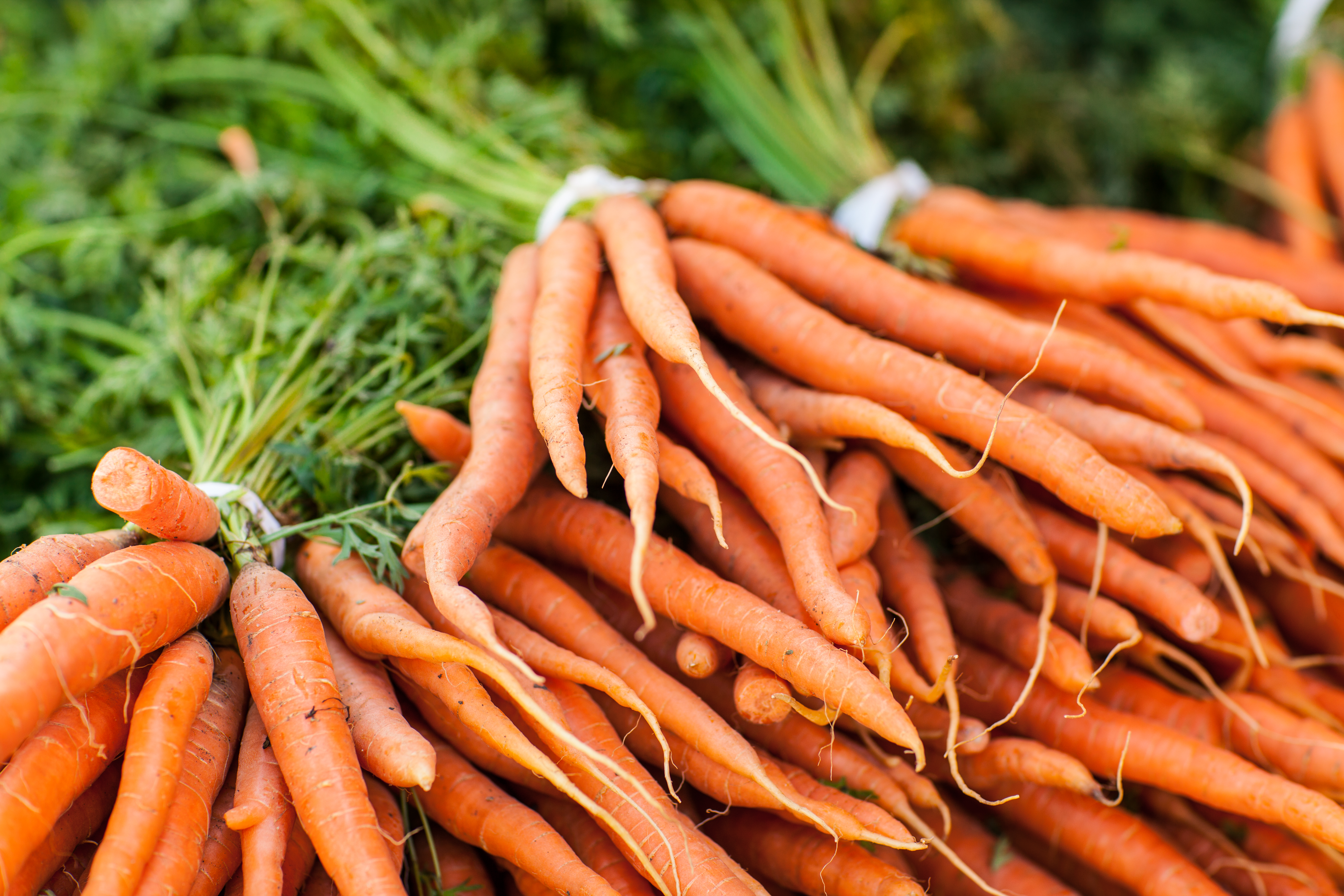Whether eating them improves your eyesight or not, carrots are a grocery staple. Make the most of these sweet, crunchy root vegetables using our guide.
Optimal Storage
- Do not wash until ready to use.
- Store in a breathable bag in the high humidity drawer or submerged in water on a shelf of the refrigerator.
- Store cut carrots in water in the refrigerator.
- Separate green leafy tops, if present, from the roots, leaving 2.5 cm of stem on the carrots (otherwise, the tops will draw moisture away from the carrots).
- The green tops can be stored in a breathable bag in the high-humidity drawer.

Freezing
- Remove tops, wash, blanch, cool, chop or purée, and pack into an airtight container.
- Raw carrots can also be shredded and frozen in zip-top freezer bags and used for baking.
Root to Fruit
- Carrots do not need to be peeled, just washed carefully; however, peeling does remove some bitterness.
- The green tops can used like fresh herbs to add color and flavor to dishes.
- Carrot tops are great additions to soups and stews, or even floral arrangements.
- Dehydrate carrot peels for crunchy and colourful veggie chips.
Revival
- Bruised, browning, or damaged carrots can be salvaged by peeling away the external layers and removing the damaged pieces with a paring knife.
- The whitish coloring that appears on cut carrots is simply dehydration.
- Revive limp carrots by placing them in an ice bath in the refrigerator for 1 hour.
- Limp carrots can be used in soups and stews and stocks.

